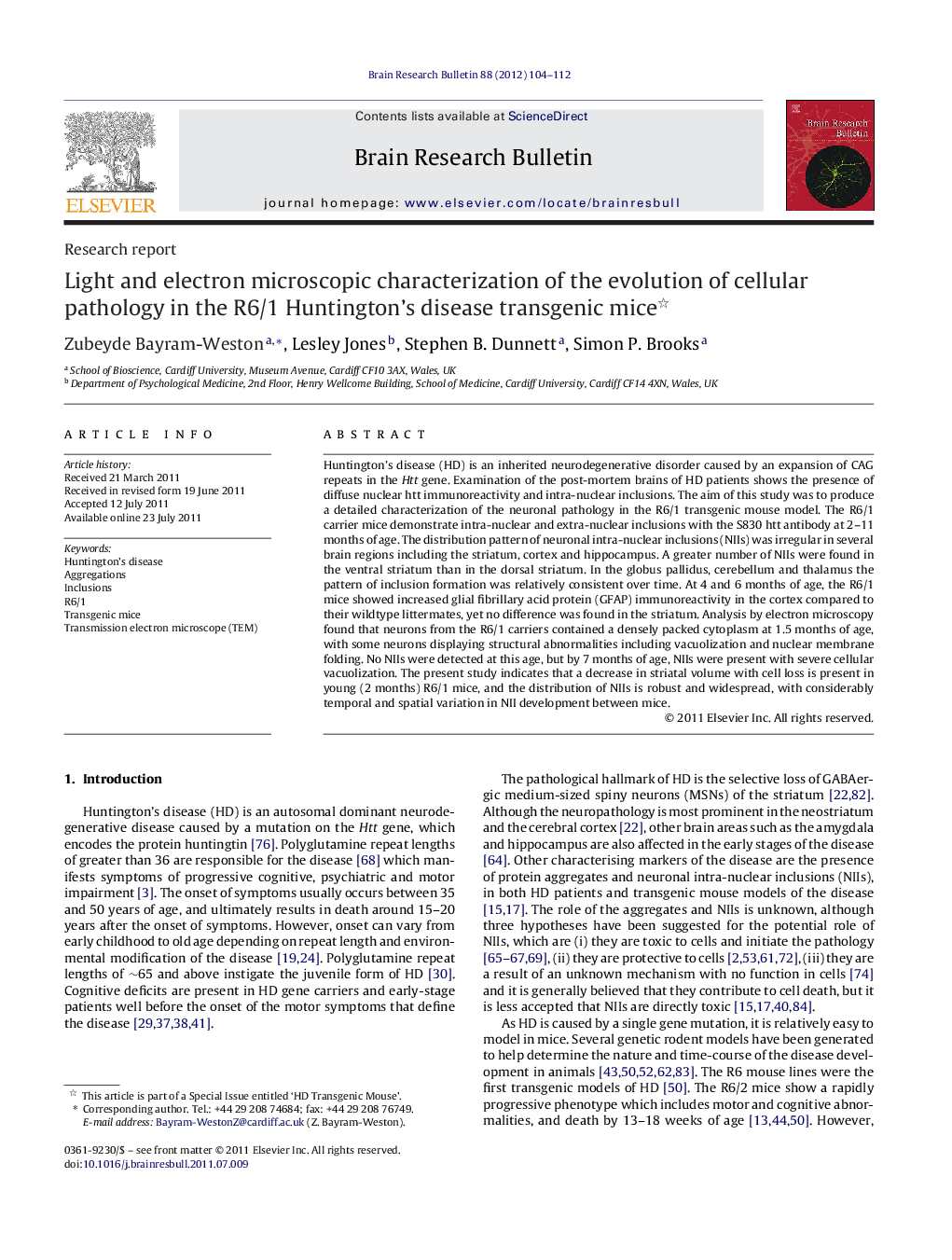| کد مقاله | کد نشریه | سال انتشار | مقاله انگلیسی | نسخه تمام متن |
|---|---|---|---|---|
| 4319069 | 1613269 | 2012 | 9 صفحه PDF | دانلود رایگان |

Huntington's disease (HD) is an inherited neurodegenerative disorder caused by an expansion of CAG repeats in the Htt gene. Examination of the post-mortem brains of HD patients shows the presence of diffuse nuclear htt immunoreactivity and intra-nuclear inclusions. The aim of this study was to produce a detailed characterization of the neuronal pathology in the R6/1 transgenic mouse model. The R6/1 carrier mice demonstrate intra-nuclear and extra-nuclear inclusions with the S830 htt antibody at 2–11 months of age. The distribution pattern of neuronal intra-nuclear inclusions (NIIs) was irregular in several brain regions including the striatum, cortex and hippocampus. A greater number of NIIs were found in the ventral striatum than in the dorsal striatum. In the globus pallidus, cerebellum and thalamus the pattern of inclusion formation was relatively consistent over time. At 4 and 6 months of age, the R6/1 mice showed increased glial fibrillary acid protein (GFAP) immunoreactivity in the cortex compared to their wildtype littermates, yet no difference was found in the striatum. Analysis by electron microscopy found that neurons from the R6/1 carriers contained a densely packed cytoplasm at 1.5 months of age, with some neurons displaying structural abnormalities including vacuolization and nuclear membrane folding. No NIIs were detected at this age, but by 7 months of age, NIIs were present with severe cellular vacuolization. The present study indicates that a decrease in striatal volume with cell loss is present in young (2 months) R6/1 mice, and the distribution of NIIs is robust and widespread, with considerably temporal and spatial variation in NII development between mice.
► The study aimed to characterize anatomically the disease progression in the R6/1 mouse line using S830 and GFAP immunohistochemistry, stereology and electron microscopy.
► Our results demonstrate that the R6/1 mice displayed intra-nuclear inclusions with S830 antibody from very early age and the distribution of NIIs was robust. The hippocampus of R6/1 mice showed uneven localization and were not layer specific in all age.
► The R6/1 mice exhibited signs of necrotic cells death, with cell swelling, vacuolization and uneven nuclear membrane.
► Our results demonstrate that the cortex of the R6/1 mice contained more intense GFAP-positive astrocytes than their wildtypes at 4 and 6 months of age.
► These results show that the distribution of NIIs does not resemble those which have been reported in adult onset human patients.
Journal: Brain Research Bulletin - Volume 88, Issues 2–3, 1 June 2012, Pages 104–112